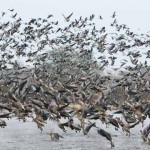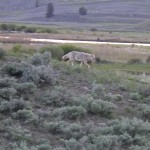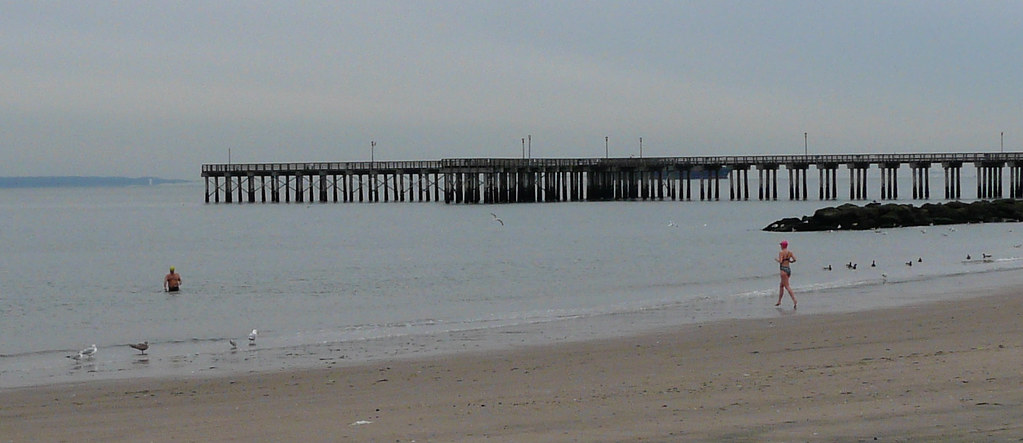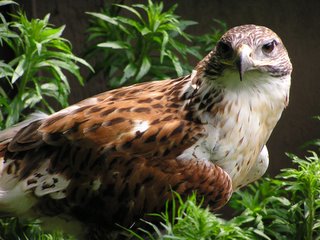 Wood duck mother and duckling
Something is going on with nests in Prospect Park this season. They’re everywhere. You can’t walk 50 feet in the park bumping into some adorable tableau of chirping baby birds. Half the trees in the park seem to be brimming with exhibitionist robin families. The big unusual nests this year are green herons and wood ducks (which are living somewhere near dog beach–but where they nested, I don’t know.)
Green herons are nesting on the lullwater and near the less-fancy bridge by the boathouse.
Green heron on nest by the boathouse. Babies are tucked under her wing.
Green heron feeds her creepy-looking babies.
Swans in the park, as if in defiance of a potential plan to wipe them out, are multiplying. They have two nests, one helpfully placed on an island by the ice rink to make for easy viewing.
The father swan normally spends his days chasing off other waterfowl, but he came and sat on the eggs with his wife. Apparently he was alarmed by a mommy mallard and her ducklings nearby.
Baby Swans
I havent’ seen barn swallows build nests on the boathouse yet, just in the tunnels.
Barn swallow nest
These robins are so desperate for attention they build nests at eye level, sometimes
Keep reading Nest Quest in Prospect Park
 Birders harass dog people in Prospect Park saying they disturb ground-nesting birds. But only six species nest on the ground here, none exclusively. Some aren’t even in the park in the summer.
Keep reading Dogs Don’t Eat Warblers–in Prospect Park or Anywhere
 Clover Hill Farm’s main work is horses, but it moonlights as an inn and a beagle paradise.
Keep reading Beagletown in the Berkshires
 Kabukiri Wetlands, where farmers flood their fields to serve migrating ducks and swans, hopes birders will return to the area about 100 miles from the nuclear disaster.
Keep reading Japan’s Kabukiri Wetlands, a Ramsar site, hopes birders return
 You know how Americans are appalled every time there’s a story out of China or Iraq about the government thugs primitively rounding up dogs and shooting them? Well, we do that, too. On purpose. Federal agents are out there killing dogs, more than one a day. They shot 157 dogs to death. And it’s not just in the yahoo states out west, either. (Although Texas and Arizona are the top states of dog-killing.) The USDA somehow insinuated itself into dog situations in 32 states. They went out and shot two dogs in Ohio and 30 in California. And it wasn’t because they feared they were rabid, either. They only tested 14 dogs for rabies.
Keep reading USDA Kills Another 4 million animals, including 477 dogs and 1,991 feral cats

The New York City Parks Department’s first shot at a marine mammal tour from Coney Island yielded absolutely none of the hoped for seals, porpoises, dolphins or whales. But we were all shocked and delighted to see real Coney Island polar bears going into the water in bikinis on what turned out to be one of the coldest days of winter. their existence is well-documented on every cheesy local news, but I consider it a rarity to see one in person.
Our park ranger guides, Marissa and Andy, couldn’t have been more enthusiastic or knew more about what we might hope to see. They had us carefully watch a cluster of birds feeding on the surface to see if we saw any seal heads pop up. Andy told us about the loons and Brant Geese (Branta bernicla) wading by the polar bears. Marissa told us stories about dolphins she’s seen regularly patrolling east to west off the Rockaways. She told us about the time a seal hauled out on Coney Island and helpful New Yorkers dragged it back to sea–twice–before realizing it just wanted to sit on the sand.
Wildlife watchers know there are no guarantees in this business. So several of us consoled ourselves with another Coney Island rarity: pizza. Maybe we’ll try one of the other tours to see seals around NYC.
Where to See Seals Where to See Wildlife in NYC
To see more animals go to
Keep reading Coney Island Marine Mammal Tour Yields Only Polar Bears

Unbeknownst to New Yorkers, seals have been hanging around the harbor for ages. For the first time the Parks Department is going to try to show them off a marine mammal tour of Coney Island today. (And next week there’ll be a walk through Pelham Bay Park in the Bronx). If Parks is trying to convince New Yorkers seals are out there, it’s a risky move: you can’t be sure when they’ll show up.
But the Coney Island walk is billed as marine mammals. The most likely sighting is a porpoise, says a ranger I talked to. For seals, we could see harbor, harp, gray or even ring seals. There’s also a chance of dolphins (common, white-sided) and whale (fin, minke or humpback). This season seals have been spotted in the Rockaways and the Bronx.
There are other, more reliable ways to see seals around New York City. Though I probably won’t be able to resist the chance to look for them someplace a subway ride away.
CRESLI (Coastal Research and Education Center of Long Island) has seal walks and boat tours on Montauk and a neat map of where you might see seals around Long Island. Seals also visit Sandy Hook in New Jersey from December to March. New York City Audubon has a cruise by a bunch of island on a water taxi. SKSA does kayak tours (wet or dry-suit required) on Long Island.
Where to See Seals Where to See Wildlife in NYC
Keep reading NYC Starts Watching for Seals on Coney Island
 Spillway,originally uploaded by Lottery Monkey.
The New York Times had an interesting story Monday about a endangered and strange animal tourist attraction in western Pennyslvania. The animals themselves aren’t endangered. They’re just carp and mallards. For 75 years the carp have been gathering in such thick numbers that mallard ducks walk on their backs to get bread thrown by tourists.
Linesville bills itself as “Where the Duck Walk on the Fish.” The problem is that someone in the Pymatuning State Park has decided that the duck droppings have reached unacceptable proportions. So they are demanding that everyone switch to pellets. That would rule out the ducks. And the many duck-themed businesses around town. Which has locals fighting back.
The Pittsburgh Tribune-Review has looked into the environmental impact of the situation before. The spectacle is supposed to bring in $55 million to the area. One study by Clarion University biology professor Andrew Turner found that the bread increased phosphorous in the reservoir by 50%. Too much phosphorous could produce too much algae. But the paper says that a local fish hatchery and sewage plant probably produce more phosphorous.
Look, the attraction is by no means natural, but that doesn’t mean it’s not worth sparing. People enjoy getting a close up look at the carp and ducks. Somehow it’s always the people who just want to see nature who end up on the short end of the stick in these economic equations. It’s ridiculous to say that we should get rid
Keep reading Fish-Walking Ducks Imperilled By New Rules
 Berkshire Bird Paradise, Grafton, NYBird Paradise is one of the country’s biggest bird sanctuaries. (It’s also one of the hardest to find, off Route 2 in NY, near the Massachusetts/Vermont border.) More than 2,000 birds (100 species) live here and lots of them are the big ones everyone wants to see: bald and golden eagles; many kinds of large hawks; exotic pheasants; former pet songbirds; barnyard refugees; black swans. You’ll walk through a long green house-esque tunnel of former pets, then out to the yard. Ducks, geese and swans swim in a pond while pheasants and chickens wander around. Twelve bald eagles hang out together in the back. At the right time of year, visitors can hide in a special blind to watch a disabled bald eagle matings pair, Ross and Marilyn, and their family. The chicks they raise fly off to the wild (though return for occassional visits).Director Peter Dubacher started rescuing birds here in 1975. Friendly supporters drop by with food, building supplies as well as money.When chicks aren’t around, the emus still the show. These giant gangly birds are very curious about their human visitors. About human height, they seem to want to dance with you from the other side of the chain link fence. They twist their necks around to get a closer view and beg for food. About 40% of the birds here couldn’t make it in the wild and so will live out their lives here.
Where to See Neat Animals in the
Keep reading Berkshire Bird Paradise: The Biggest Bird Sanctuary in New York
|
Subscribe SUBSCRIBE TO THE BLOG

|










Recent Comments